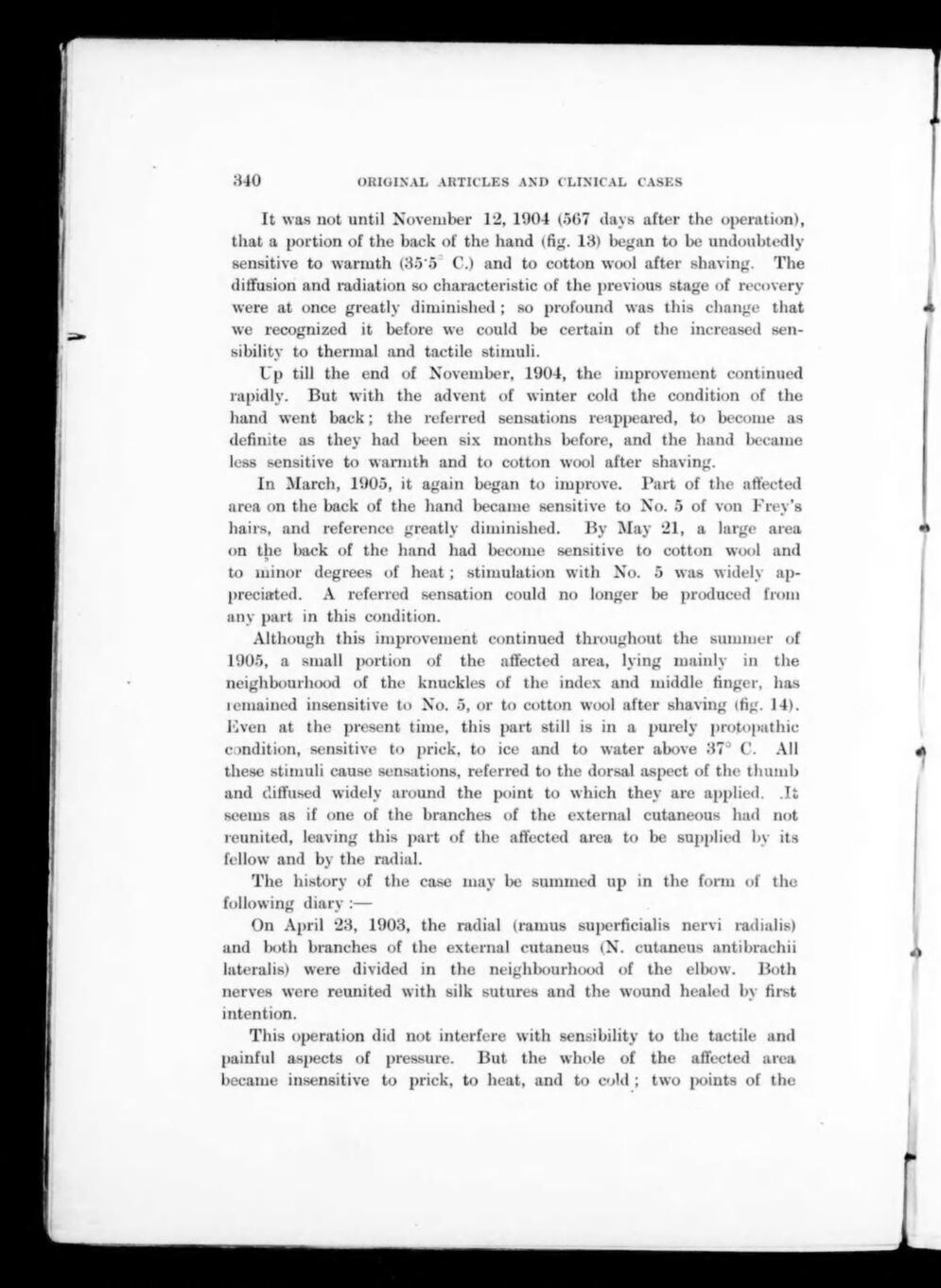It was not until November 12, 1904 (5G7 days after the operation), that a portion of the back of the hand (fig. 13) began to be undoubtedly sensitive to warmth (35'5° C.) and to cotton wool after shaving. The diffusion and radiation so characteristic of the previous stage of recovery were at once greatly diminished; so profound was this change that we recognized it before we could be certain of the increased sensibility to thermal and tactile stimuli.
Up till the end of November, 1904, the- improvement continued rapidly. But with the advent of winter cold the condition of the
hand went back; the referred sensations reappeared, to become as definite as they had been six months before, and the hand became less sensitive to warmth and to cotton wool after shaving.
In March, 1905, it again began to improve. Part of the affected area on the back of the hand became sensitive to No. 5 of von Frey's hairs, and reference greatly diminished. By May 21, a large area on the back of the hand had become sensitive to cotton wool and to minor degrees of heat; stimulation with No. 5 was widely appreciated. A referred sensation could no longer be produced from any part in this condition.
Although this improvement continued throughout the summer of 1905, a small portion of the affected area, lying mainly in the neighbourhood of the knuckles of the index and middle finger, has remained insensitive to No. 5, or to cotton wool after shaving (fig. 14). Even at the present time, this part still is in a purely protopathic condition, sensitive to prick, to ice and to water above 37° C. All these stimuli cause sensations, referred to the dorsal aspect of the thumb and diffused widely around the point to which they'are applied. It seems as if one of the branches of the external cutaneous had not reunited, leaving this part of the affected area to be supplied by its fellow and by the' radial.
The history of the case may be summed up in the form of the following diary :—
On April 23, 1903, the radial (ramus superficialis nervi radialis) and both branches of the external cutaneus (N. cutaneus antibrachii lateralis) were divided in the neighbourhood of the elbow. Both nerves were reunited with silk sutures and the wound healed by first intention.
This operation did not interfere with sensibility to the tactile and painful aspects of pressure. But the whole of the affected area became insensitive to prick, to heat, and to cold ; two points of the
